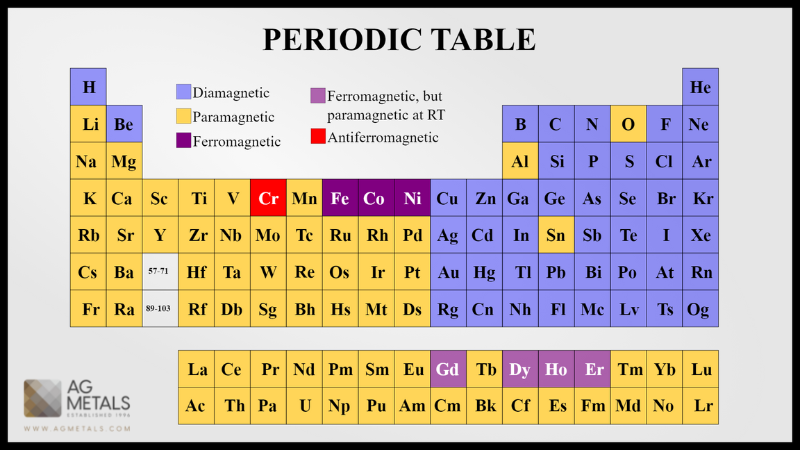Explanation of the types of magnetism:
Ferromagnetism: This is the most common type of magnetism and is exhibited by materials like iron, nickel, and cobalt. In ferromagnetic materials, the magnetic moments of individual atoms align spontaneously, creating a strong magnetic field. These materials can retain their magnetization after an external magnetic field is removed, making them useful for permanent magnets.
Paramagnetism: Paramagnetic materials have unpaired electrons, which align with an external magnetic field, resulting in a weak attraction to the field. However, they lose their magnetization when the external field is removed. Examples include aluminum, platinum, and oxygen.
Diamagnetism: Diamagnetic materials have paired electrons, but when exposed to an external magnetic field, they develop a weak magnetic moment in the opposite direction to the applied field. This causes them to be weakly repelled by the magnetic field. Examples include water, copper, and gold.
Antiferromagnetism: In antiferromagnetic materials, adjacent magnetic moments align antiparallel to each other, resulting in zero net magnetization. Although they possess magnetic ordering, the overall effect is neutral at a macroscopic scale.
Ferrimagnetism: Ferrimagnetic materials are similar to ferromagnets, but they have two different types of magnetic ions with opposing magnetic moments. The net magnetic moment is non-zero, but smaller than in ferromagnetic materials. Examples include magnetite (Fe3O4) and ferrites.
Understanding these different types of magnetism is crucial in various scientific and technological applications, including electronics, material science, and medical imaging.

